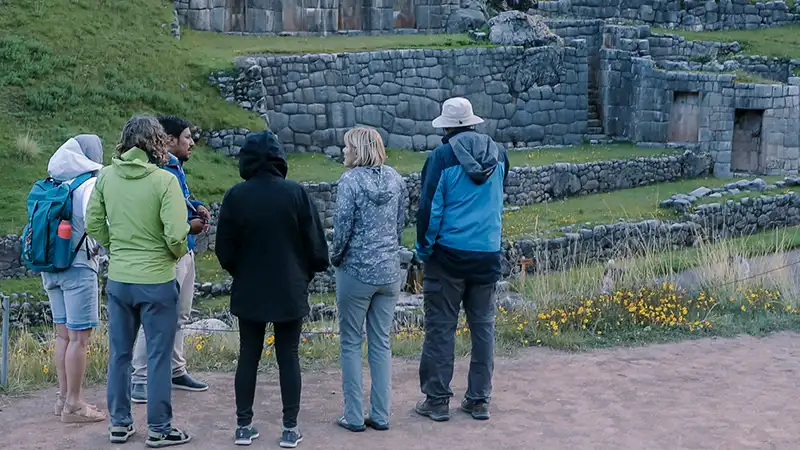Salineras of Maras
The Salineras of Maras Cusco, also known as the Inca salt terraces, is a group of around 3,000 ancient terraced pools in the Incas' Sacred Valley. The pre-Inca Wari culture built the terraces, and later expanded by the Incas. The salt mines are still in use today, and the sun evaporates the brine to produce salt. The salt is then sold in markets all over Peru. The Salineras is a UNESCO World Heritage Site and one of Cusco's most popular tourist attractions. If you're planning on visiting, here's what you need to know.
What is Salineras?
Salineras are salt pans used for centuries to harvest salt from the earth. The pans are located in the highlands of Peru, near the city of Cusco. The climate and elevation make the area ideal for salt production.
The salt pans are lined with stone walls that trap heat and allow evaporation to occur. This process produces a high concentration of salt, which workers then harvest. The salt is then transported to markets in Cusco and other cities in Peru.
The Salineras are an essential part of Peruvian culture and have been used for centuries to provide salt for the country. They are a unique natural wonder and a must-see on any trip to Peru.
History of the Salineras of Maras
The history of the Salineras of Maras dates back to the time of the Inca Empire. The Salineras of Maras is located in the Sacred Valley of the Incas, about 3,000 meters above sea level. The salt springs were formed by melting a vast salt deposit left behind by an ancient lake. The spring water is very salty because it comes into contact with this salt deposit. The Incas built a series of terraces on the hillside where the spring water flows. They channeled the water onto these terraces and then evaporated it in the sun to collect the salt. The collected salt was then used for trading with other communities. Today, the Salineras of Maras are still in use. Local families own and operate them, using the same techniques as their ancestors. The salt is still used for trade and sold to tourists as souvenirs.
How the Salineras of Maras Work
The Salineras of Maras is a series of ancient Incan salt pans still in use today. The pans are located in the highlands of Peru, near Maras. The salt pans are fed by a natural spring rich in minerals. The water flows into the pans and evaporates in the sun, leaving behind a thick layer of salt. The salt is then harvested by hand and sold in local markets. The Salineras of Maras have been used for centuries and are vital to the local economy. The salt pans are a beautiful sight and a testimony to the ingenuity of the ancient Incans.
The Benefits of the Salineras of Maras
The Salineras of Maras Cusco is a group of over 3,000 small salt pools that have been used for salt production since the time of the Incas. The salt pools are located on a terraced hillside in the Sacred Valley of the Incas and are fed by a natural spring.
The salt produced in the Salineras is considered some of the best quality in the world and is used in many industries. The benefits of Salineras go beyond just the production of salt; they also include environmental and social benefits.
The environmental benefits of the Salineras include that they are powered by solar energy and do not require any electricity or fossil fuels to operate. The water used to fill the pools is also naturally filtered by rocks and minerals, so it does not require additional treatment.
The social benefits of the Salineras include providing employment for local people and helping to support the local economy. The salt produced in the Salineras is also used to support many charitable projects in Peru, such as providing clean drinking water to rural communities.
Is Salineras sustainable?
Salineras are not new and have been used for centuries to harvest salt. However, with the modern-day emphasis on sustainability, many people wonder if Salineras are sustainable.
The short answer is yes, Salineras is sustainable. They are powered by the sun and use very little water compared to other methods of salt production. It is estimated that one Salinero can produce about 80-100 kilograms of salt per year with just 10 liters of water.
However, there are some concerns about the long-term sustainability of Salineras. The biggest problem is that the evaporation ponds will eventually dry up, leaving behind a salty residue that could harm the environment. There is also the possibility that the high concentration of salt could make the soil less productive over time.
Overall, Salineras is a sustainable way to produce salt and have a minimal environmental impact.
Conclusion
The Salineras of Maras is an impressive and must-see if you're ever in the area. The history and craftsmanship behind these salt mines are fascinating, and the above views are breathtaking. If you have the chance, add the Salineras of Maras Cusco to your list of places to see - you won't regret it!



